After all the high speed rafting action I moved on to something a little slower: Turtles in action! In this small town / national park, it’s all about the turtles and the wild life.
Tortuguero is a quiet little island on the east coast of Costa Rica, which you have to reach by boat. Actually everything gets there by boat, as there are no cars on this island. I shared the boat with a set of new living room furniture for example and next to us was the fruits and vegetables boat. The island has canals on the west coast and the carribean sea on the east coast, where the turtles come from to lay the eggs on the beach.
I arrived on the island quite early, around 8 and most of the shops and restaurants were closed, but there was some movement and people coming and going. I thought I was just too early, so I walked around town (15 mins end-to-end) again around midday, but nothing had changed. The same thing happened in the evening, around 8ish, it seemed the street food stands were being built up and I expected the night life to be more lively, but at around 10 everything was dead again and the local disco never had more than 20 people in it at one time. It seemed to me like the town was somehow always in foreplay.
Anyways, the town’s main source of income is tourism, as tourists come to see the sea turtles (green and leather back) laying their eggs on the beach at night. Some also go on one of several wildlife spotting tours in the jungle and small water canals on the west side of the island via Canoe or Kayak.
The night turtle tour basically takes place on the beach. Whenever the coast guards spot a sea turtle coming out to the beach to lay eggs, they would call the guide and we would rush to see it using only a red flashlight, since red lights don’t disturb the turtles. If you’re lucky you will get to see the whole process from starting to dig the hole in the ground, laying about 100 ping pong like eggs, covering the hole again and going back to sea.
The tour itself was quite informative and had a lot of interesting facts, but I did get the feeling like our guide, Luis, was checking off a checklist of things to see or say so he can go home early. Also he told us to wake up early the next day and walk on the beach to see the baby turtles crawl to the see but failed to mention that it wasn’t officially allowed. After all this is a national park and there are organizations there to protect the turtles. Another thing I noticed was the very strong lighting of the village. This is not very good for the baby turtles as they usually sense the horizon lights to determine, where the water is so they can crawl back to it and so any hint of light can disturb their sense of direction after digging their way to the surface. That was something I was really impressed by at the turtle center I went to in Oman. They really make sure that the turtles are not disturbed and although there is a hotel right on the beach there, none of the rooms have windows facing the sea as the lights from the rooms may confuse the baby turtles. Which, from a business perspective makes no sense, but it is really all about the turtles there. It was nice to see that a middle eastern country takes nature so seriously for a change. Anyways, here is a quick summary of the most interesting things I learned about the green sea turtle (since it was their season):
- The turtles will lay eggs about 3-4 times per season and around 100 eggs each time.
- It takes the eggs around 2 months for the eggs to hatch.
- The majority of the eggs will become male or female depending on the temperature of the sand.
- Only 1 in 1000 eggs laid will hatch to become an adult. The rest will die or be eaten by other animals or humans.
- It takes 25 years for a baby turtle to become an adult.
- The adult turtles will come back to the beach where their mother originally laid their egg to lay it’s eggs.
The next day I went on a canoe tour through the canals of Tortuguero. We mainly saw different kind of birds, some people see Tucana sometimes, but we didnt find any. There was one cool bird, called green back or belly something. This bird catches flies and then uses them to catch fish!!
We also saw and heard a few howler monkeys, otters, caimans, iguanas and river turtles.
Our guide was Luis again, but this time he was in the mood. He is quite a funny character, works a lot and loves his job, but gets tired at night. He may not the most informative guide but he is at least passionate and is still fascinated by the wildlife. Not to mention very descriptive; “These birds can fly in the sky” and “The river turtles have a shell and live in the river” :-p
He is also quite talented at spotting animals in camouflage, which I am not as I discovered; “huh, where? which tree!??”. So I actually appreciated Luis’ descriptions hehehe
After the tour I had some more Gallo Pinto (rice & beans) and eggs for breakfast, the typical breakfast in Costa Rica and finally caught the boat to the next town for some more beach time.
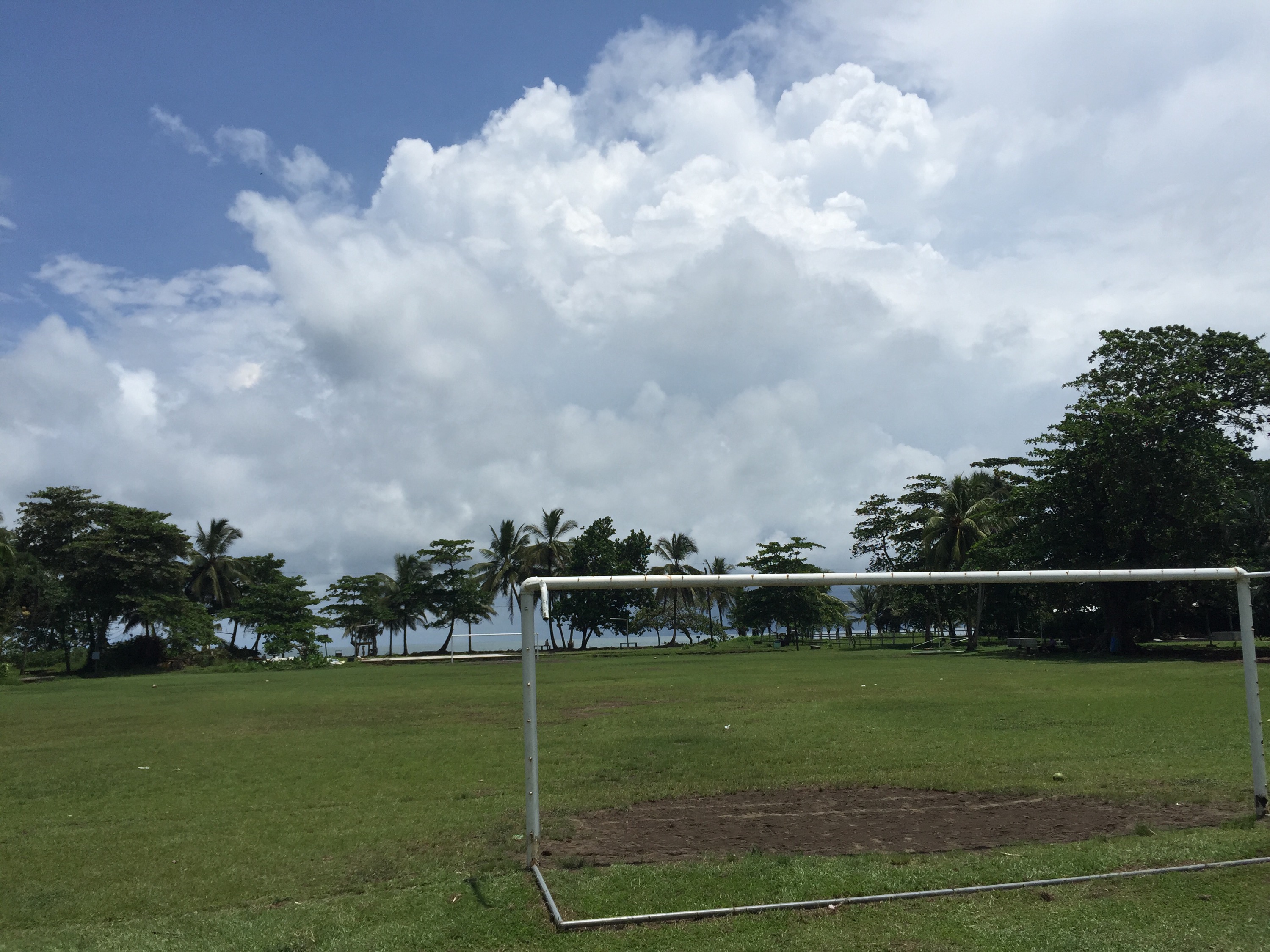
On of the best football fields I’ve ever seen. After playing you could just walk in to the Caribbean ocean to cool down.

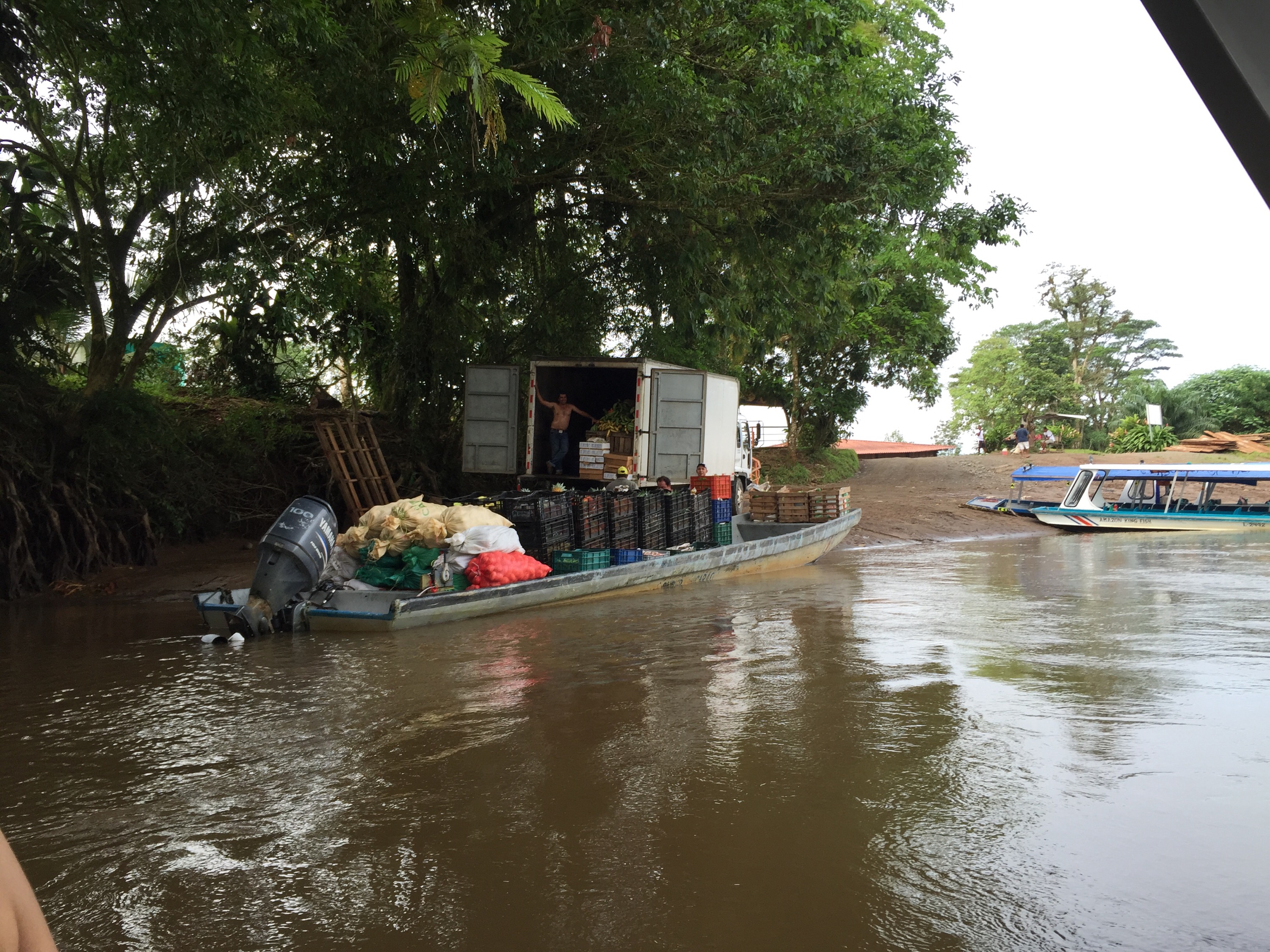
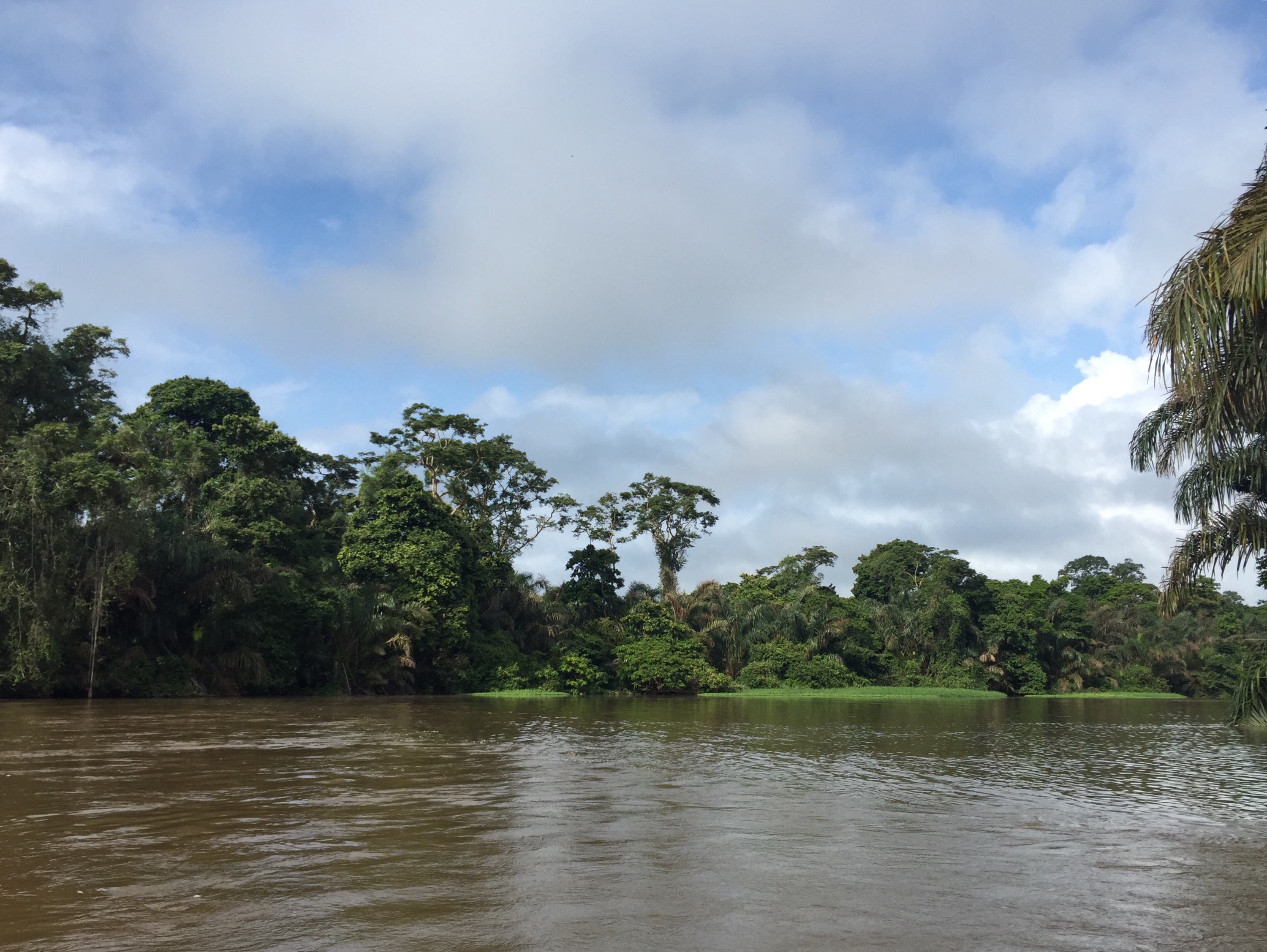
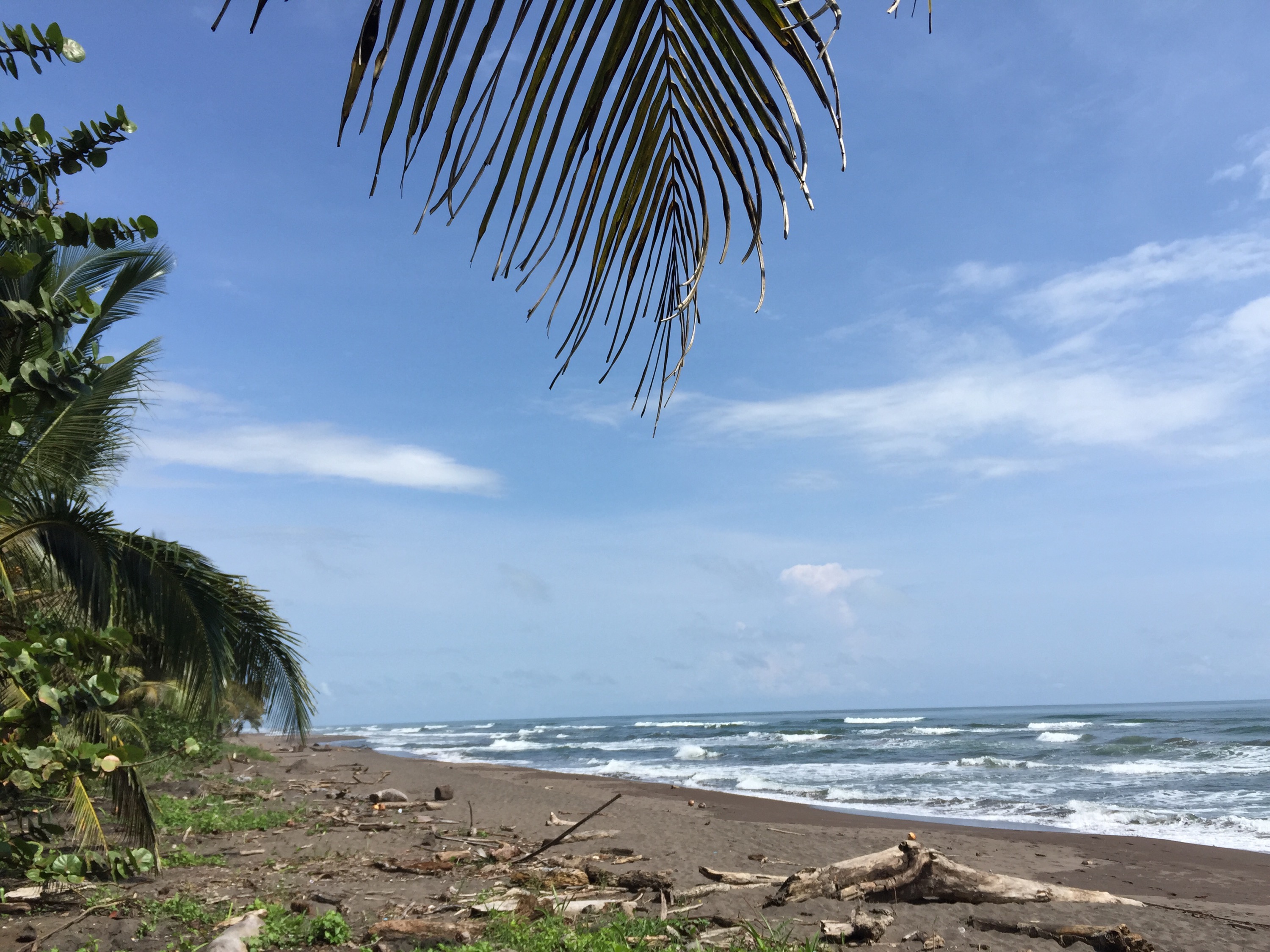

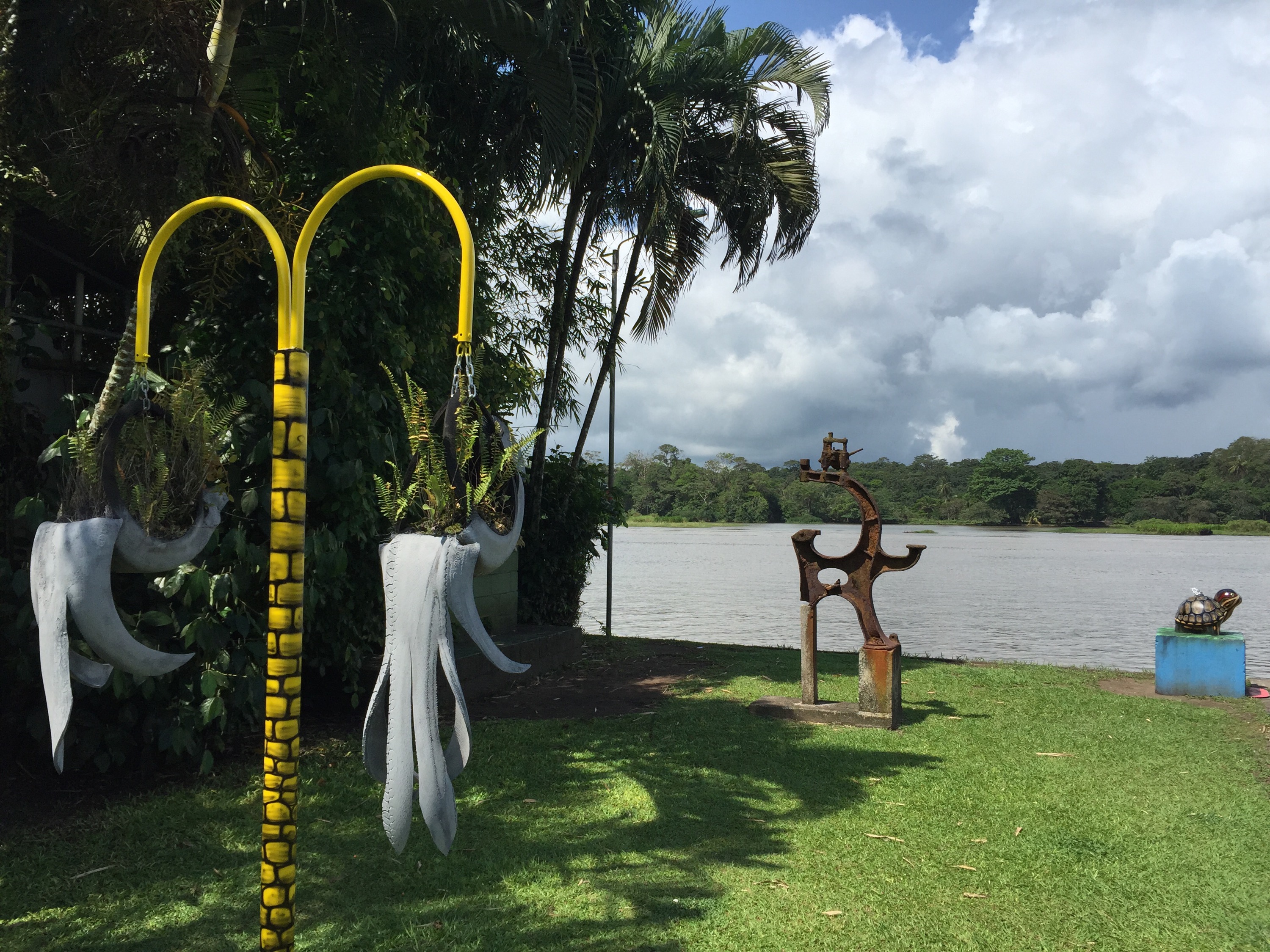



You are the only one I know who experienced turtle tourism, let alone twice! Very interesting info, actually, especially the dependence of their sex on the temperature! I am tempted to explore that further…